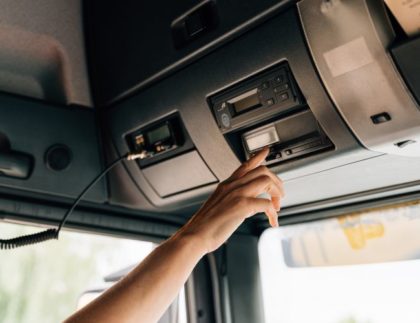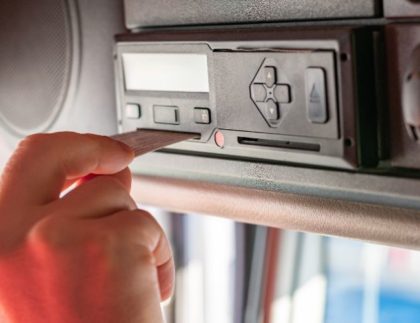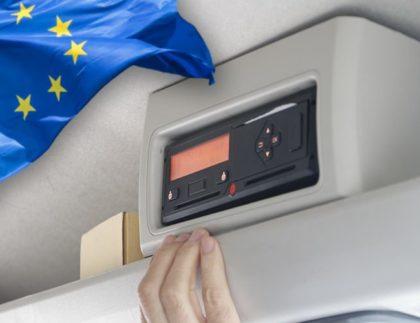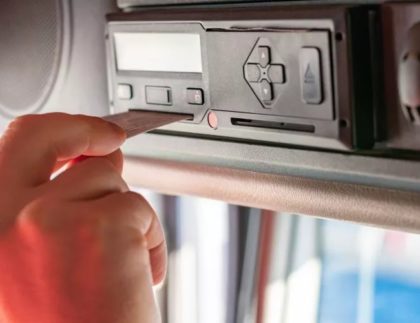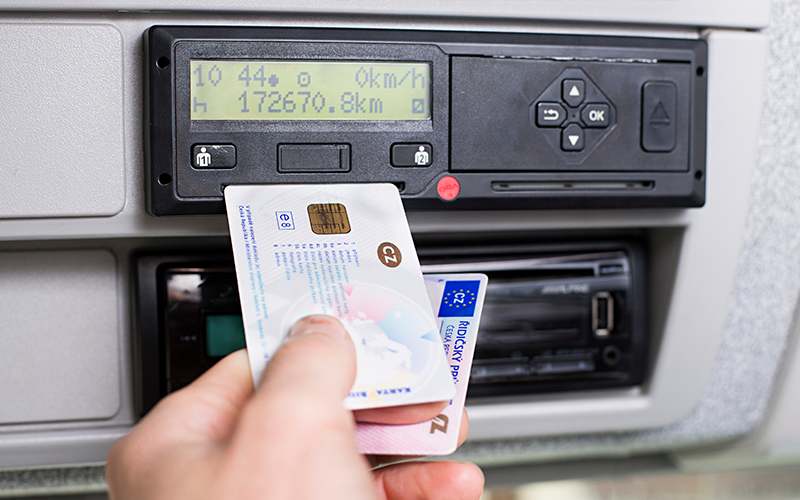

Operating in compliance with the applicable legal provisions allows the carries not only to avoid serious sanctions, but also to secure the stability and reputation of their business. In the light of increasingly restrictive regulations, such as the rules introduced by the Mobility Package, the care for compliance is even more crucial.
A correct recording of the driver’s activity and working time is a particularly important issue in this context. This obligation applies to the drivers of vehicles equipped with tachographs. A driver card, which contains recorded information of significance for the inspection agencies, is a necessary document then.
In this article, we will take a look at what a driver card is and what data it contains; we will also discuss how to effectively read this data in compliance with rules. We will also note the most common errors made during this process and analyze the current regulations concerning driver cards. Read on!
Driver card: what is it and what information does it contain?
A driver card is a personalized document which plays a basic role in monitoring the working time. This card must not be lent to third parties and every driver may hold only one active document. It contains identification data, such as name and surname, date of birth and driver license number.
Moreover, the driver card stores information on the events which have occurred during transport, as well as on the driver’s activities, such as vehicle driving time, breaks, rest periods, work start and end country, any digital tachograph failures and other important data related to the work performed and availability. The regulations concerning driver cards specify that holding this document is obligatory for all drivers who perform road transport using trucks with permissible total weight above 3.5 tons and when transporting more than nine people.
An analysis of data from digital tachographs and driver cards provides the inspection agencies with a range of necessary information, which is why the precision of recording the individual events is so important – a driver card records it, including the date and precise time, as well as the current odometer status. Making regular read outs of the data is especially important in this context.
In practice, the driver cards enable the inspection bodies to precisely monitor and verify compliance with working time regulations. Thus, the driver cards and digital tachographs contribute to increasing safety on roads and minimizing the risk of traffic accidents resulting, for example, from exhaustion.
Step by step: the process of reading data from a driver card
The data may be read using a driver card and tachograph reader. This type of devices enables downloading the data recorded on the card, as well as collecting, analyzing and archiving it using the company computers. To do this, you need a software to open the files with DDD (Digital Data Distiller) extension.
Tachoreader Combo is a good example of such a tool – a modern device enabling automatic data download in compliance with the mandatory timeframes set forth under legal regulations. For driver cards, the data must be read at least once every 28 days, while digital tachograph read outs should be performed at least once every 90 days.
In the light of the newest regulations, it is also important that the reading device ensures full compatibility with the newest G2V2 cards and so-called 2nd generation smart digital tachographs.
What else should you pay attention to?
- reader capacity (which is up to as many as 160,000 readings for Tachoreader Combo);
- capability to automatically download the data based on the date of the previous reading;
- compatibility with the driver cards and digital tachographs available on the market.
The most frequent problems and errors when reading the data from a driver card
The process of reading the data from a driver card itself is not complicated, however, there may be some errors, which potentially affect the correct monitoring of a driver’s working time and, thus, the compliance.
Of course, human errors are the most frequent problem. This includes the failure to observe the timeframes for the obligatory reading of driver card data – as a reminder, pursuant to the applicable regulations, the data should be read at least once every 28 days. However, this period includes only the days of recorded driver’s activity, as there is no obligation to read cards which have not been used. This is not all! Other errors are, for example, failure to read driver card data in the case of employment termination or when the document validity is expiring.
You should also remember that the provisions concerning the driver cards and digital tachographs specify that the data should be retained for 12 months from the date of reading, which is the obligation of the carrier.
Importance of and regulations for driver card data reading
The provisions concerning driver cards can be found, for example, in the Regulation (EC) No. 561/2006 of the European Parliament and of the Council. These are exactly the provisions (Article 10) which impose the obligation to make data readings and determine its retention period. The Regulation also mentions the rules of conducting on-road inspections by authorized agencies, the data which should be provided by a driver in a such situation, as well as the procedure applicable if a document is damaged or lost.
Commission Regulation (EU) No. 581/2010 is another important legal act which stipulates the obligations in relation to handling the driver cards. Article 1 of the Regulation sets forth the maximum time periods stipulated for reading the data from driver cards and digital tachographs.
Please remember that, in accordance with above-mentioned domestic and European Union regulations, the reading of the data from a driver card should be performed at least once every 28 days or more often in the case of:
- professional driver’s employment expiry or transport services contract termination;
- driver card validity expiration;
- request from the authorized inspection authorities.


